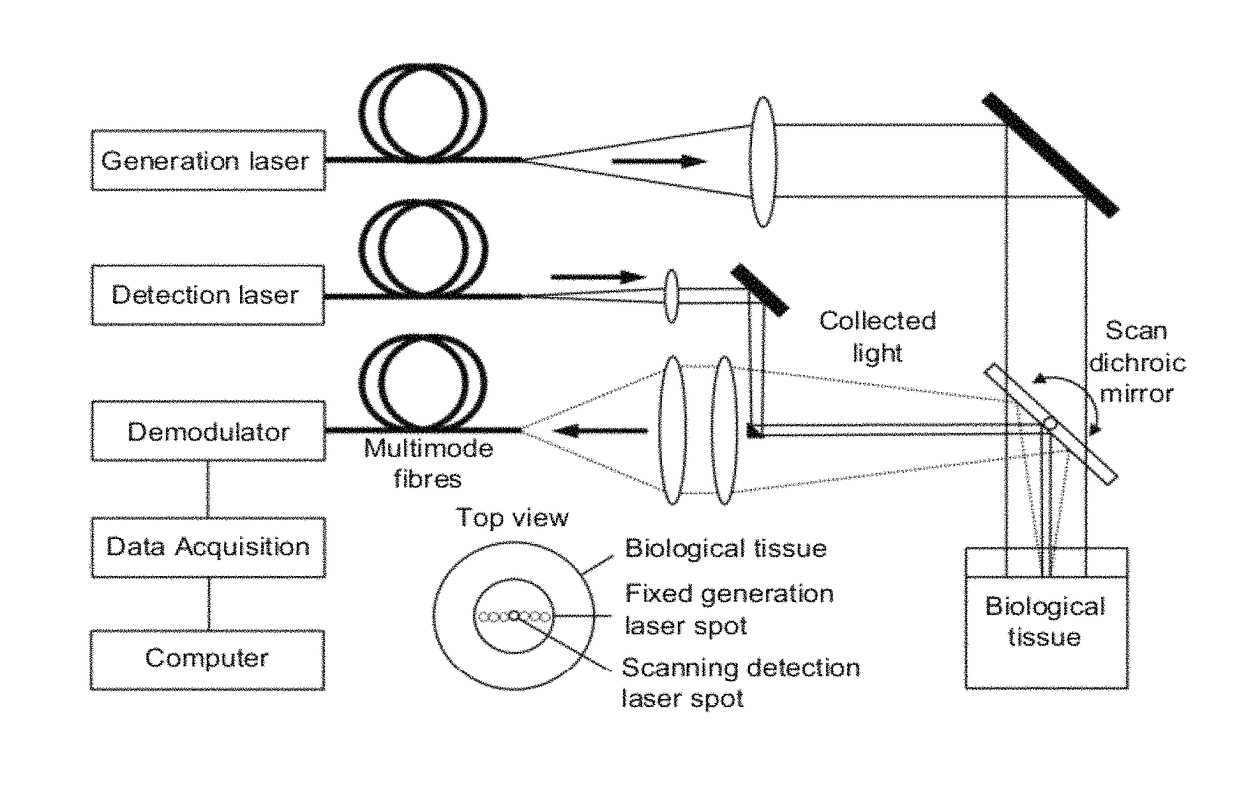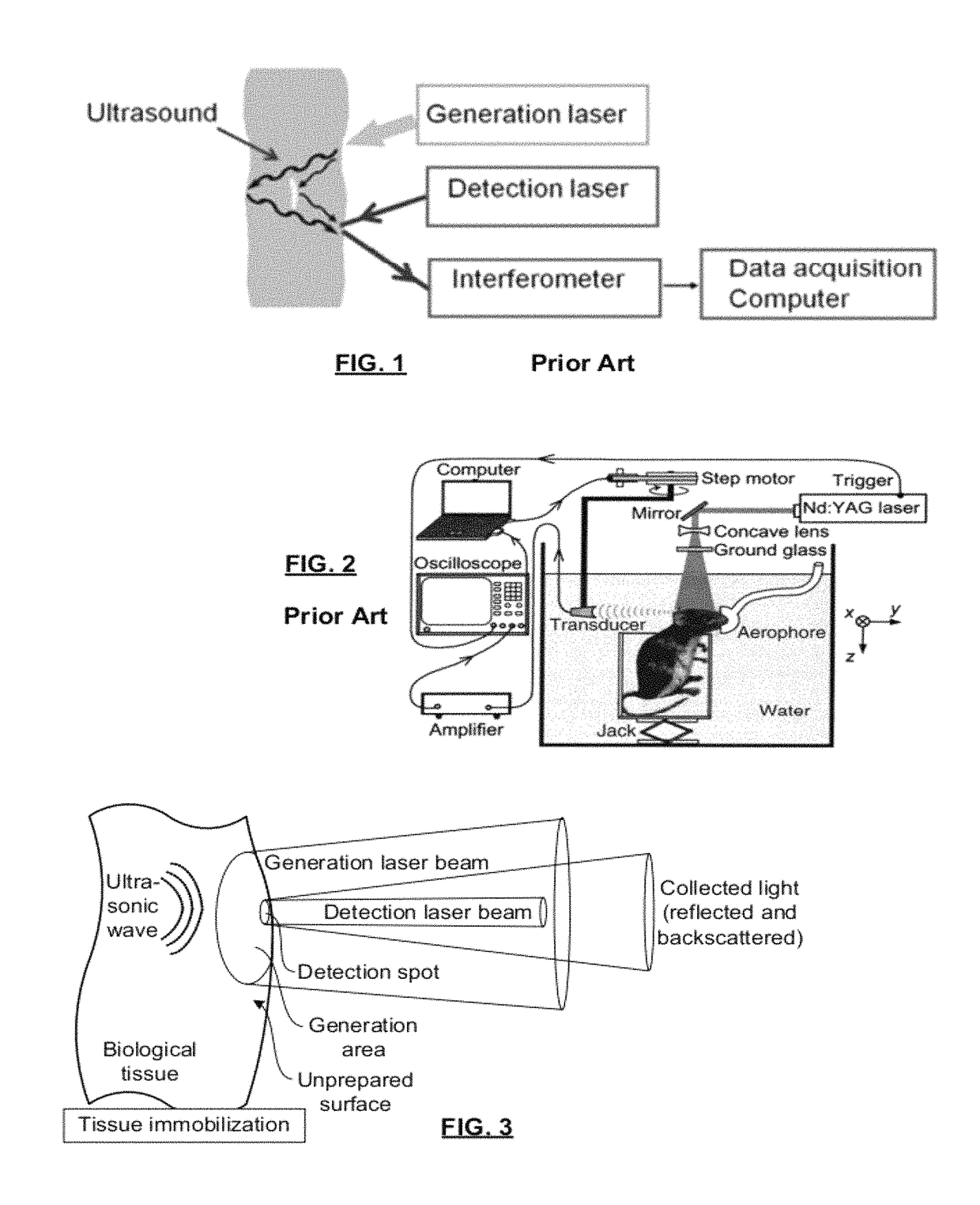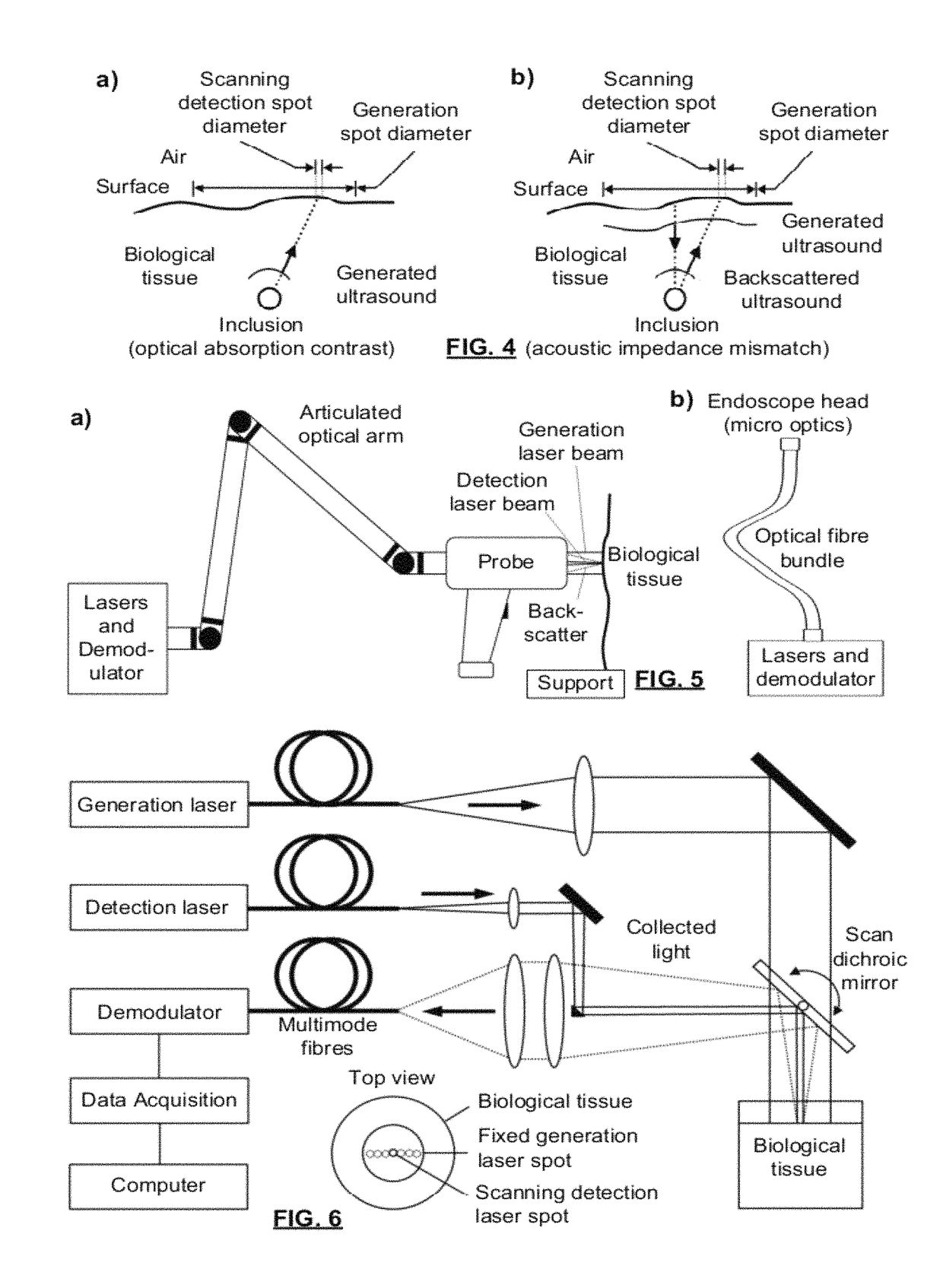Biological tissue inspection method and system
a biochemical tissue and inspection method technology, applied in the field of biomedical imaging, can solve the problems of limited probing depth, damage in industrial laser-ultrasonic imaging, and limited imaging methods relying on ballistic photons, so as to achieve less absorption, reduce pulse duration, and effectively provide concentrated power
- Summary
- Abstract
- Description
- Claims
- Application Information
AI Technical Summary
Benefits of technology
Problems solved by technology
Method used
Image
Examples
example
[0057]FIG. 6 is a schematic illustration of a system used to verify the present invention. The generation laser was a frequency doubled actively Q-switched laser emitting 5 ns pulses at 532 nm. This wavelength efficiently excites blood, making it an effective ultrasonic transducer by thermoelastic generation. The repetition rate was equal to 10 Hz and the pulse energy impinging on the surface was about 100 mJ. The GLB was oriented toward a BT onto a large spot size (about 25 mm in diameter giving an area of 5 cm2) which satisfies the maximum permissible exposure (MPE) at generation wavelength (20 mJ / cm2 at 532 nm). With a 10 Hz repetition rate, the average power density of the GLB was equal to 200 mW / cm2, which is also in accordance with the safety limit in the case of repetitive exposure at 532 nm. The detection laser beam was transmitted by a second optical fiber and focused onto the surface of the tissue after reflection by a computer controlled scanning mirror. The DLB had a wav...
PUM
| Property | Measurement | Unit |
|---|---|---|
| wavelength | aaaaa | aaaaa |
| peak power | aaaaa | aaaaa |
| depth resolution | aaaaa | aaaaa |
Abstract
Description
Claims
Application Information
 Login to View More
Login to View More - R&D
- Intellectual Property
- Life Sciences
- Materials
- Tech Scout
- Unparalleled Data Quality
- Higher Quality Content
- 60% Fewer Hallucinations
Browse by: Latest US Patents, China's latest patents, Technical Efficacy Thesaurus, Application Domain, Technology Topic, Popular Technical Reports.
© 2025 PatSnap. All rights reserved.Legal|Privacy policy|Modern Slavery Act Transparency Statement|Sitemap|About US| Contact US: help@patsnap.com



